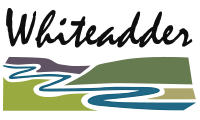The Whiteadder archaeology project is a collaborative investigation into the archaeology and landscape history of the Whiteadder Water, one of the primary communication routes through the Lammermuir Hills. The newly acquired aerial LiDAR data provided us with an incredible resource for this investigation, and by publishing the data online on our interactive web map, we were able to throw the investigation out to the public and invite ‘armchair archaeologists’ to contribute to the analysis of the data.
LiDAR works by scanning the surface of the landscape from the air with a powerful laser, capable of measuring thousands of surface points per second. These measurements are collated into a huge dataset associated with GPS positions to produce a very high-resolution elevation model. This model can then be digitally ‘illuminated’ to cast shadows across the landscape at oblique angles, making faint earthworks and structural remains much easier to identify. The data set is draped onto a base map, meaning that historic Ordnance Survey maps, modern satellite imagery and existing archaeological records can be combined, helping identify new sites that have never been recorded before.
The web map built into the Whiteadder project website was designed to allow our citizen scientists to browse the LiDAR data by zooming and panning, turn on and off historic mapping supplied by the National Library of Scotland, and query nearby archaeological records held in existing archives. A tagging tool allows users to click and drop a point onto the map whenever they find a new feature, with a pop-up box to collect a short description what they think they have found.
This user-contributed data is automatically synced to the project database, allowing the archaeology team to review public findings and compare them to other information sources.
Since the project’s launch in June 2019, users have identified and contributed over 200 new archaeological sites to the project database. These range from unrecorded sheepfolds and field boundaries, to possible prehistoric settlements, burial cairns and historic farmsteads.
The Gallery below presents some of the highlights contributed to the project database through the Citizen Science programme.

